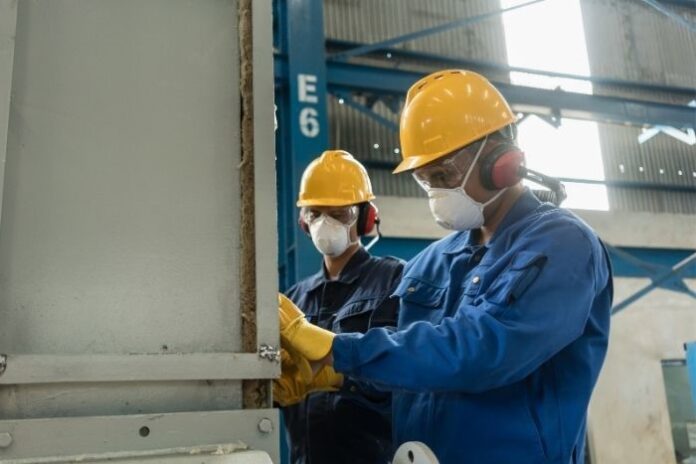Everything we use comes from a manufacturer who processes or assembles the final product from smaller pieces or parts. Many of these manufacturing processes involve the use of thermal management — through melting, curing, cooking, heating, or cooling materials to achieve specific physical and chemical properties. However, controlling these temperature-dependent reactions isn’t always straightforward. Managing heat efficiently and consistently is one of the biggest challenges manufacturers face, and it directly affects product quality, safety, and cost.
This is where thermal management comes in. So, what is thermal management in manufacturing? Let’s break down the science, the technology, and the engineering that make it all work.
Table of contents
Thermodynamics and Manufacturing
Whether you remember it from school or work with it every day, thermodynamics is the study of how heat, work, and energy interact. In simple terms, heat is energy in motion — energy that moves between substances due to temperature differences.
Manufacturing processes take advantage of this principle to transform raw materials into finished goods. When plastic is melted and reshaped, when metal is cast and hardened, or when food is baked to perfection, thermodynamics is at play.
In an industrial setting, heat isn’t just a byproduct — it’s a tool. The key is controlling it precisely. Too much heat can warp a mold or burn a surface; too little can lead to incomplete bonding or structural weakness. Manufacturers depend on thermodynamic systems that can both generate and regulate heat at exact levels to maintain consistency, efficiency, and product integrity.
The Role of Thermal Management Technologies
Technology responds to unmet needs, and in manufacturing, thermal management technology is at the heart of reliable production.
For instance, in plastic injection molding, there are many heat-managing insulation materials and temperature measuring computers. But there is a need for more tailored systems in the medical device and automotive industries in which these plastics lay the foundation for the final manufactured product. From rapid medical part prototyping to mass-produced automotive grilles, plastic injection molding varies widely in its application. However, these parts and products would not be possible without quality thermal management tech working behind the scenes during manufacturing.
Beyond plastics, industries such as semiconductor fabrication, aerospace engineering, and medical device manufacturing rely on cutting-edge thermal systems. These may include:
- Liquid cooling systems that circulate fluids to remove excess heat from equipment.
- Phase-change materials (PCMs) that absorb or release heat during phase transitions.
- Thermal interface materials (TIMs) that improve heat transfer between components.
- Smart sensors and control software that continuously monitor temperature and adjust system performance in real time.
Without these technologies, modern manufacturing lines would experience frequent downtime, material waste, and safety risks.
Engineering Implications and Design Considerations
Even the best technology is only as effective as the engineers who design and implement it. Proper thermal engineering requires deep understanding of heat transfer principles, material properties, and environmental factors such as airflow and humidity.
In a high-volume production environment, small variations in temperature can have large-scale consequences. Engineers must calculate thermal loads, heat flux, and energy efficiency across every part of the production line. They collaborate with designers and facility managers to build environments that maintain optimal temperature control — from machinery to the air circulation systems.
For example, a facility producing microchips may need cleanrooms where temperature, humidity, and airflow are controlled within fractions of a degree. Meanwhile, a food manufacturer might rely on conveyor ovens or refrigeration tunnels that need constant thermal balancing to ensure safety and uniformity.
When thermal management is neglected, it can lead to product defects, equipment failure, or even workplace hazards. When done right, it ensures consistent output, longer equipment lifespan, and greater energy efficiency.
Why Thermal Management Matters
The next time someone asks, “What is thermal management in manufacturing?” you can tell them it’s the hidden backbone of every production line. It’s what keeps engines from overheating, plastics from warping, and electronic components from burning out.
Whether you’re studying engineering, working in production, or simply curious about how everyday objects are made, understanding thermal management helps you appreciate the complexity and precision behind modern manufacturing.
Thermal control isn’t just a technical necessity — it’s a competitive advantage. As industries move toward automation, smart factories, and sustainable practices, mastering the science of heat will remain one of the most important aspects of industrial innovation.











